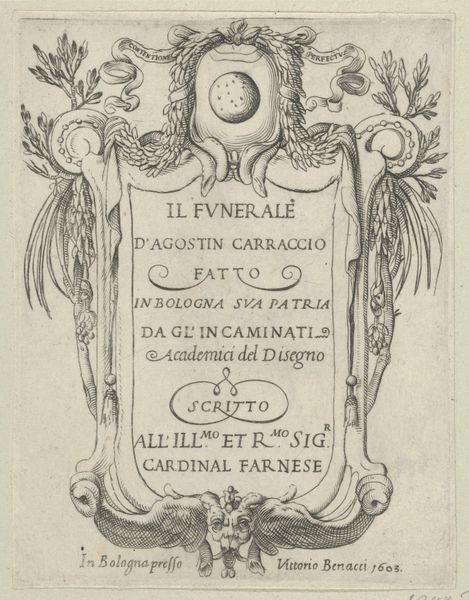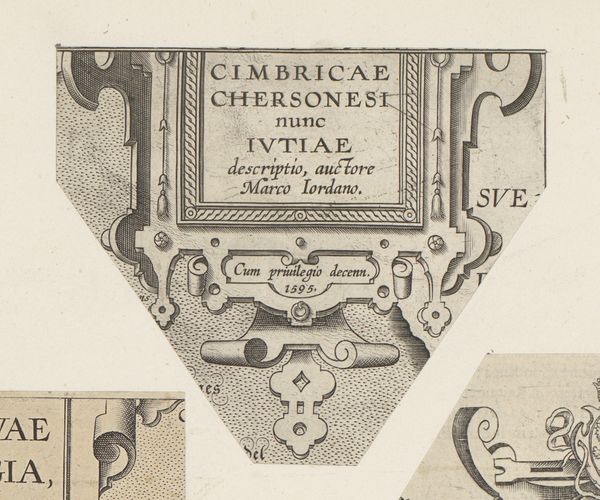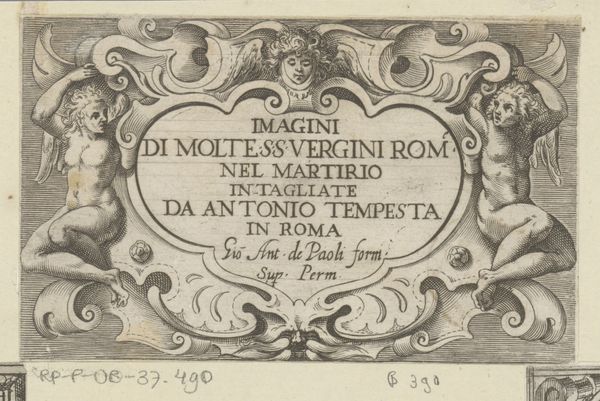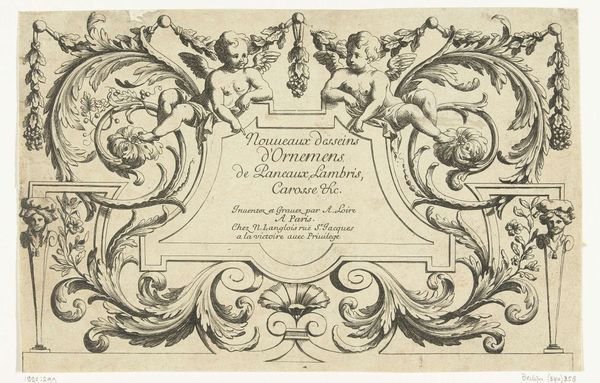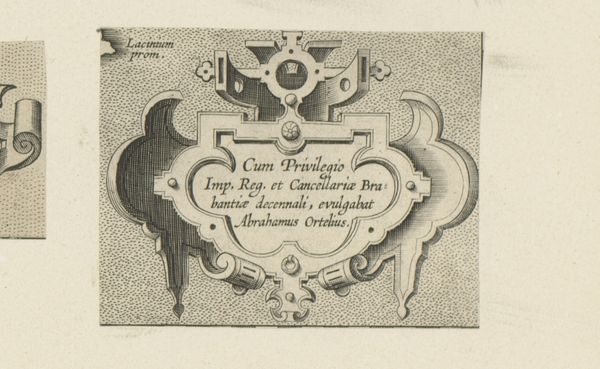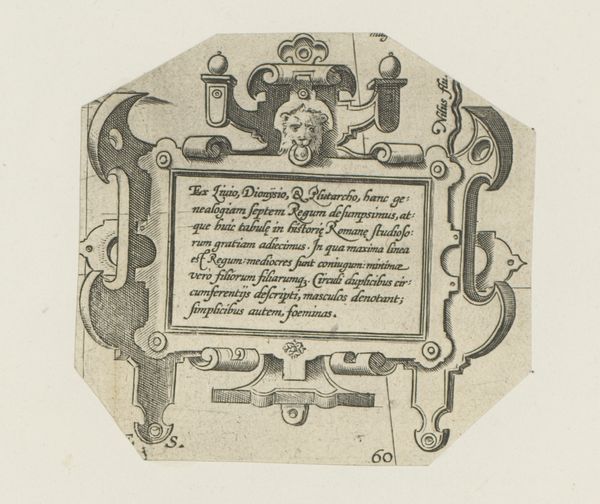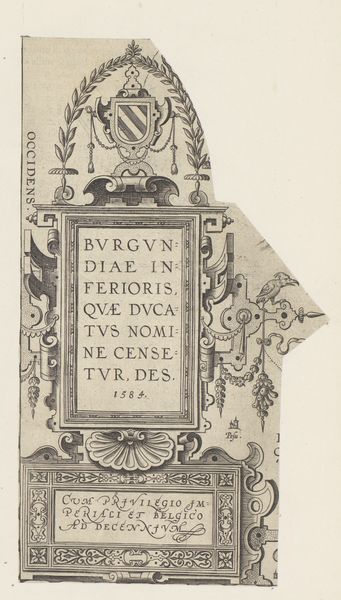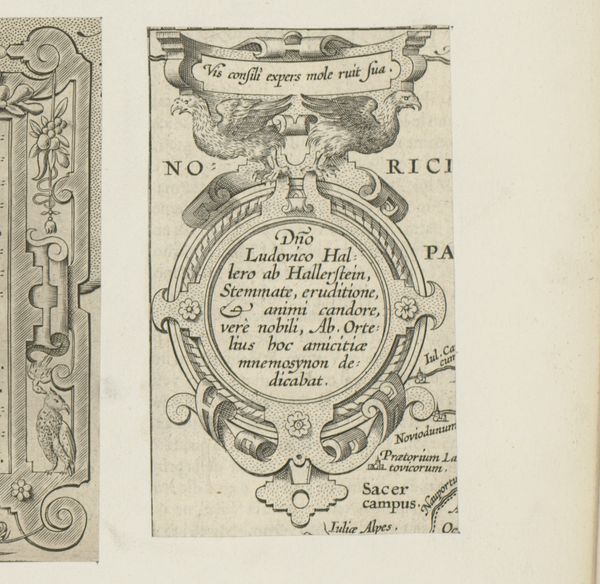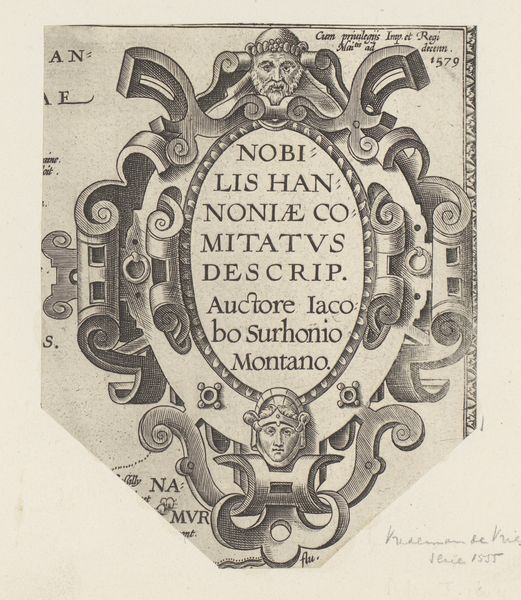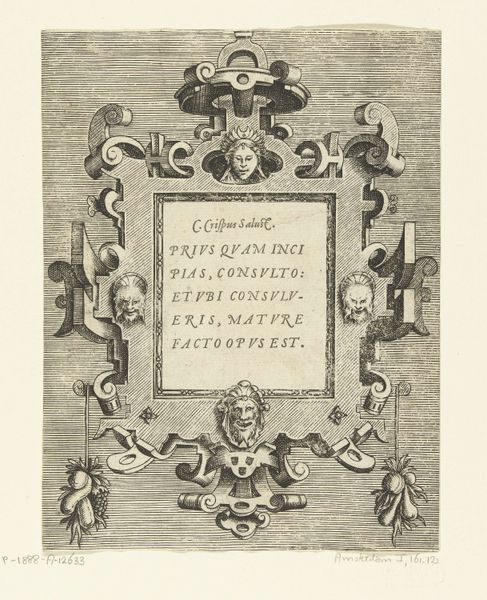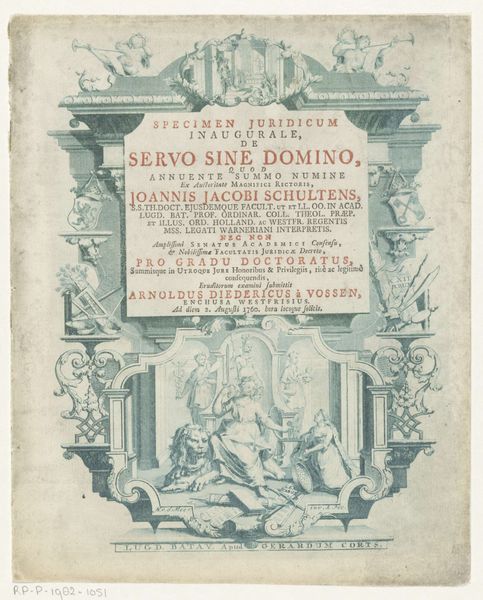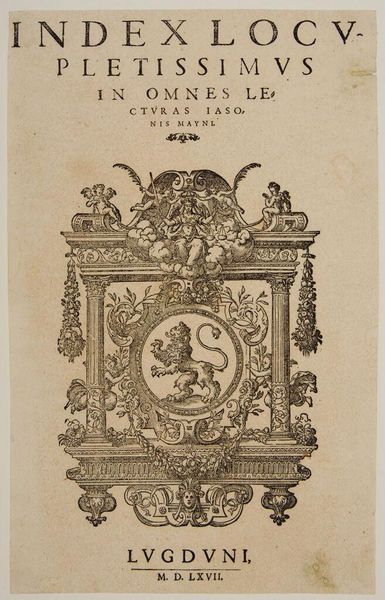
graphic-art, print, engraving
#
graphic-art
# print
#
11_renaissance
#
geometric
#
ancient-mediterranean
#
decorative-art
#
engraving
Dimensions: height 111 mm, width 108 mm
Copyright: Rijks Museum: Open Domain
Editor: This is a rectangular cartouche from 1595 by an anonymous artist, made as an engraving. It feels very ornamental; how should we be interpreting this? Curator: What immediately grabs me is the persistent human desire to frame and contain information, here, a map detail of Le Mans. Look how even utilitarian data aspires to grandeur through symbolic frameworks. Editor: Grandeur? I see geometry and some figures, but how do they give it such cultural weight? Curator: Observe the mask motif incorporated into the cartouche. Masks in art, since antiquity, serve not to conceal, but to reveal layers of meaning: protection, ritual, identity, deception, performance. What could this imply in the context of mapping a region? Editor: Perhaps about the perceived authority and control over that region? Or maybe the aspirations of whoever commissioned it? Curator: Precisely. The cartouche itself acts as a symbolic declaration of ownership and understanding. It uses the language of classicism and Renaissance aesthetics to legitimize power, imbuing geographic information with a sense of timeless authority. Note also, how text itself becomes ornamentation! Editor: So it is a blend of art and propaganda of the time? Fascinating how images encode such intentions. Curator: Indeed. Recognizing those layered meanings grants a deeper understanding. Editor: It is a reminder to look beyond surface aesthetics to understand the stories they’re telling.
Comments
No comments
Be the first to comment and join the conversation on the ultimate creative platform.
